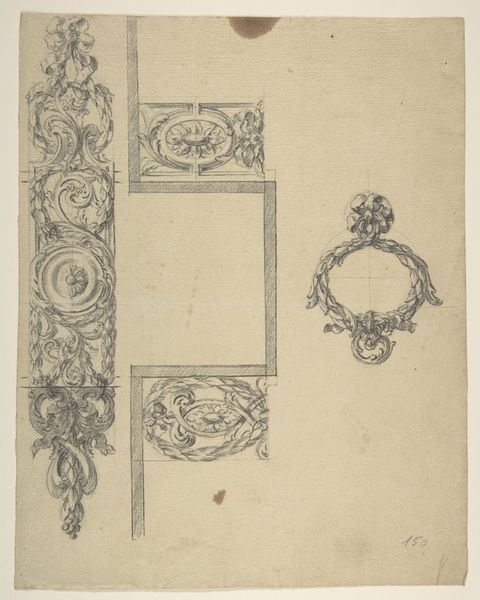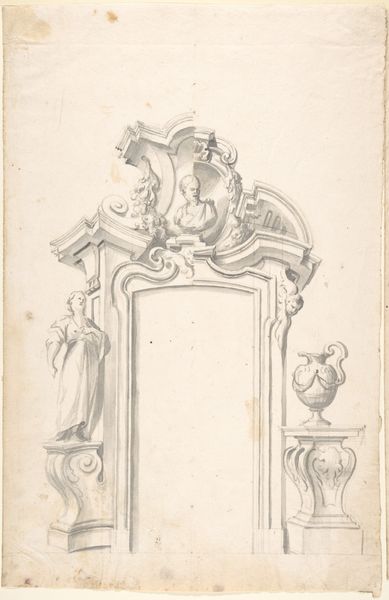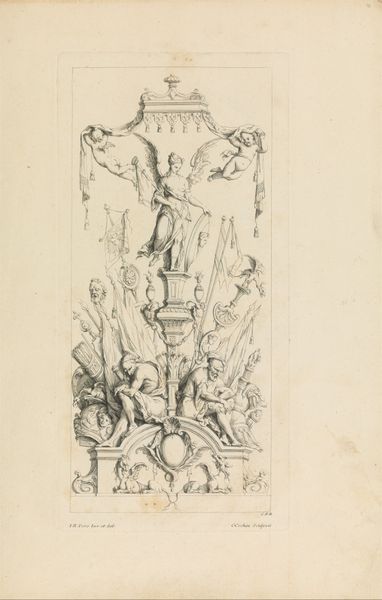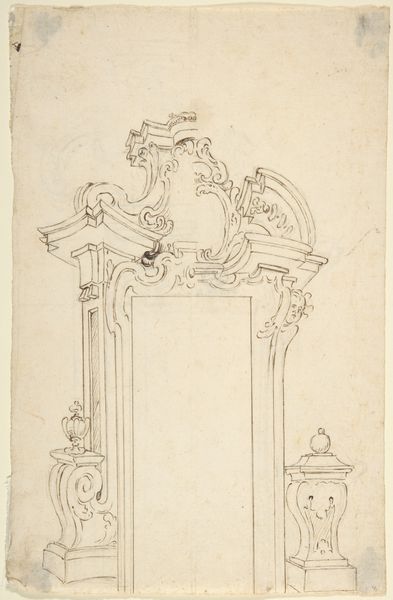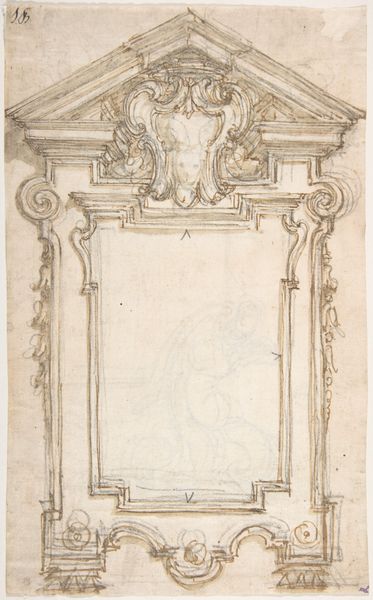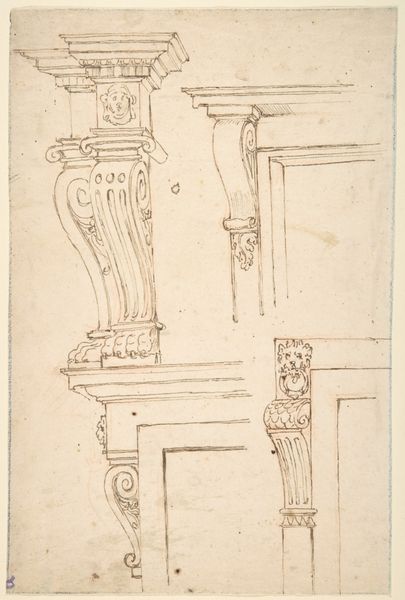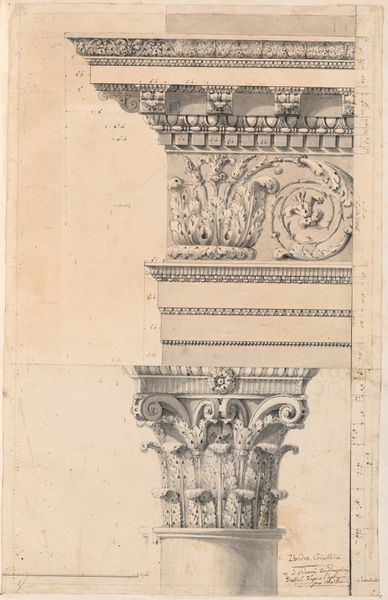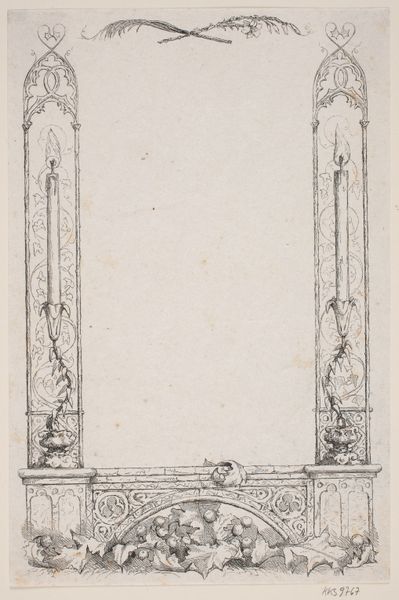
Design for a Cartouche or Frame with Four Groups of Military Ornament: Flames and Thunderbolts on bottom; Swags of Bombs at Sides; Sword, Baton, and Laurel Top. 1700 - 1800
0:00
0:00
drawing, print
#
drawing
#
neoclacissism
# print
#
form
#
geometric
#
line
#
history-painting
#
academic-art
Dimensions: 10-3/16 x 13-15/16 in. (25.8 x 35.4 cm)
Copyright: Public Domain
Curator: This is a fascinating design for a cartouche, likely intended for framing an inscription or image. Dating from between 1700 and 1800, this work is currently held at the Metropolitan Museum of Art. Editor: It strikes me immediately as a declaration—so austere yet rife with aggressive symbols, those tight parallel lines. It projects absolute power. Curator: Indeed. Looking at its constituent elements, we find, at the bottom, flames and thunderbolts. Above, swags of bombs flank each side. At the apex, a sword and baton lie entwined within a laurel wreath. Editor: The thunderbolts, flames and bombs – explicit symbols of violent power. The sword and baton—emblems of military command embraced by a wreath of laurel suggesting honor, or perhaps even a need to sanctify that power? There's real cultural anxiety bubbling here. Curator: Precisely. The symmetrical organization, the almost mathematical precision in the rendering of the details—all speak to Neoclassical ideals, which aimed to imbue artwork with a sense of order, reason, and control. Even the academic line work, demonstrates control. Editor: But isn't it ironic? This calculated symmetry actually heightens the visual impact of the violent symbols, creating a sort of cognitive dissonance. A rational mind imposing a framework of destruction! Or even controlling chaotic situations by imposing order over what could otherwise go awry. Curator: The artist, though anonymous, displays remarkable technical skill. Notice the delicate cross-hatching, giving a sculptural depth to what is, after all, a drawing, most likely for a print. The intent being mass production. Editor: Meaning the intent was to distribute that controlled power, to standardize it for all who received the print and ultimately the message! To keep it ubiquitous in the collective psyche. Curator: And consider how the composition directs the gaze inward, framing the empty space. Waiting, perhaps, for a name, a motto, or an image—an assertion of authority waiting to happen. Editor: It's unsettling, really. This potential for wielding military force with such calculated, cold detachment. The cultural weight it carries. Curator: The design is a stark reminder of how aesthetic principles were often intertwined with displays of authority and power. Editor: Yes, leaving me pondering how symbols of violence become enmeshed with ideals of beauty and order. A design with enduring cultural impact and historical import.
Comments
No comments
Be the first to comment and join the conversation on the ultimate creative platform.



